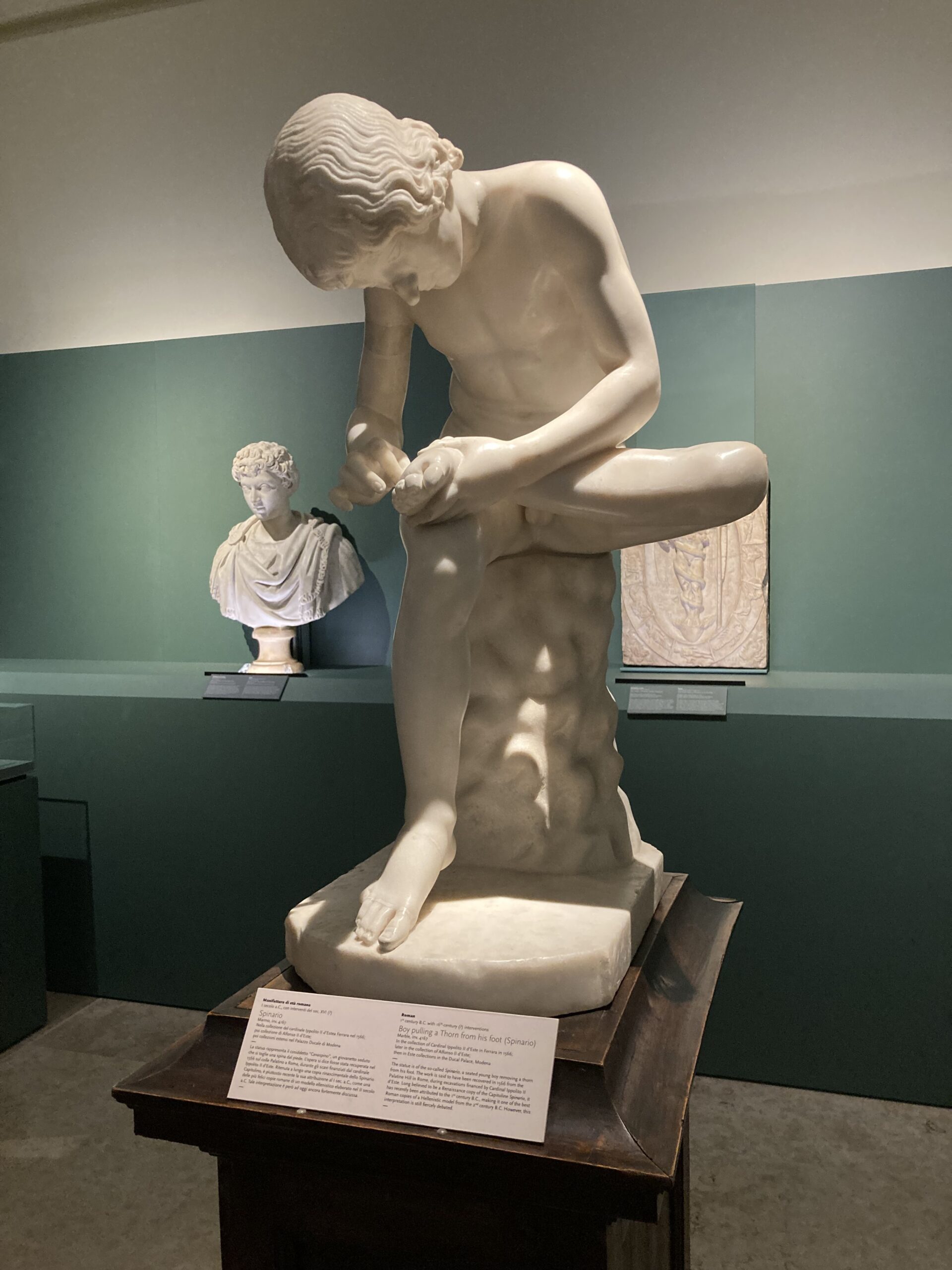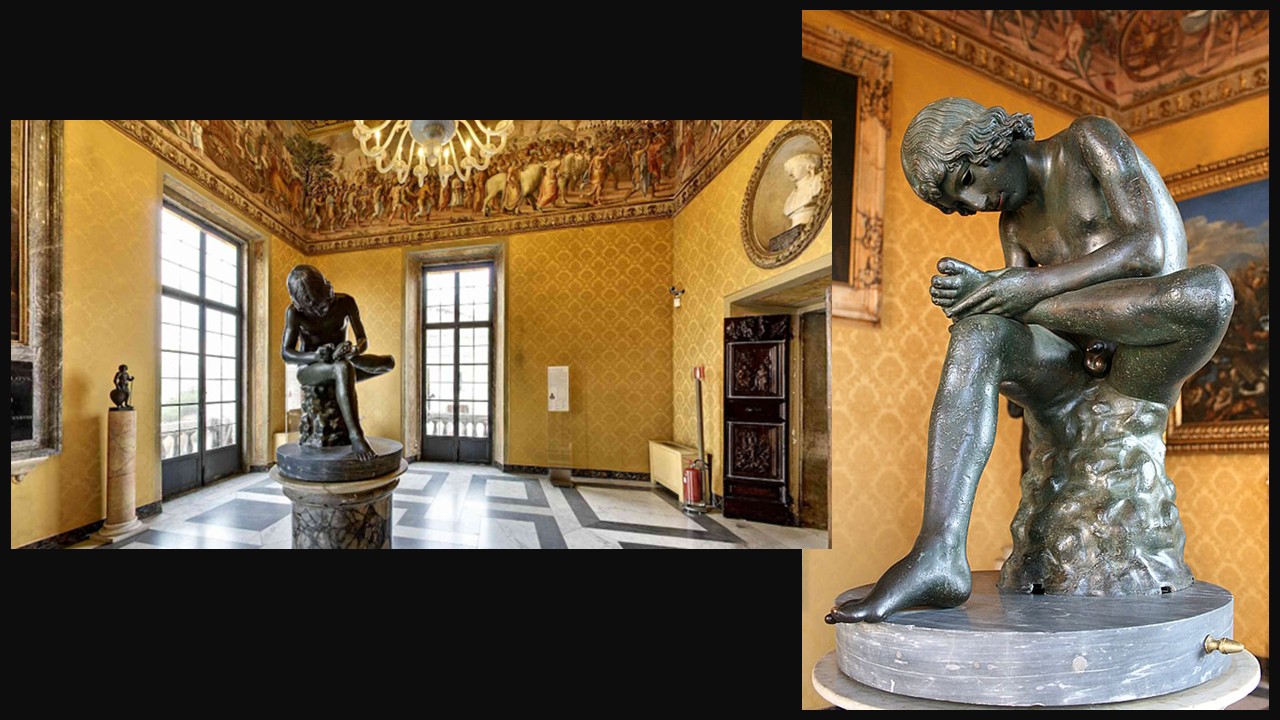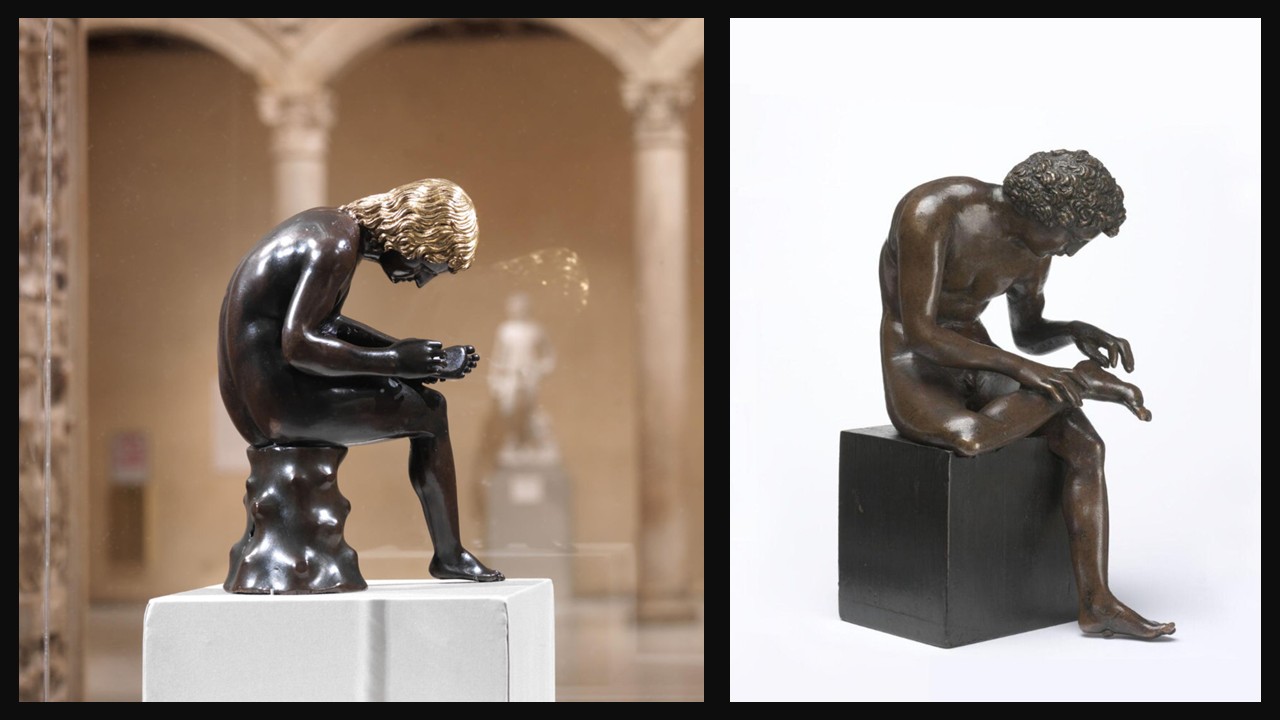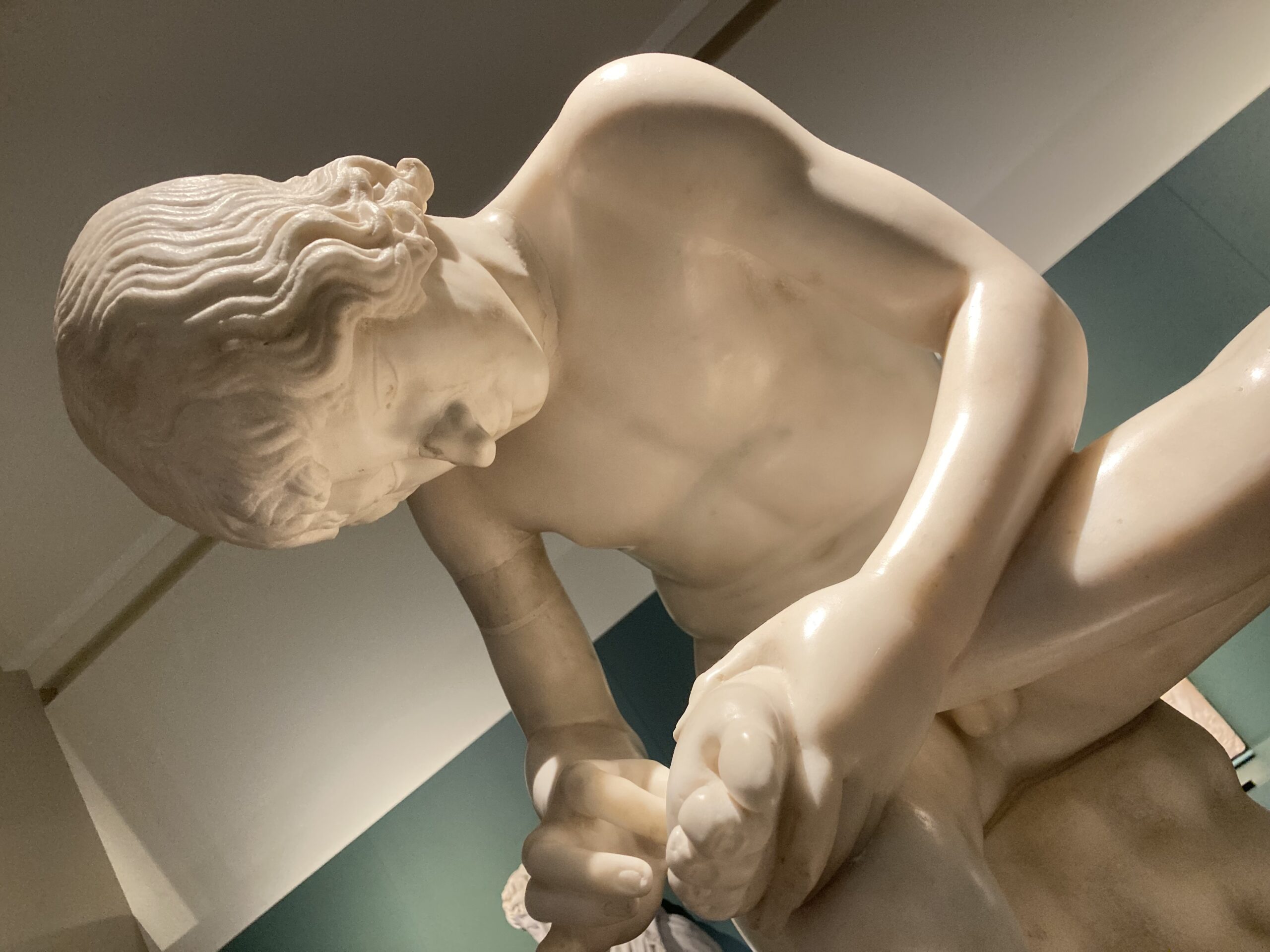
The Spinario, also known as Boy with Thorn, is a celebrated bronze statue that likely dates to the Hellenistic period (323–31 BC), though the most famous version is a Roman copy from the 1st century BC. The original Greek artist remains unknown, but the sculpture exemplifies the Hellenistic interest in naturalism and the depiction of everyday, intimate moments. It shows a young boy seated, intently pulling a thorn from his foot—a simple yet evocative scene that contrasts with the heroic or divine themes common in earlier classical art. The statue gained fame during the Renaissance, admired for its realistic portrayal of youth and emotion, and was among the first ancient sculptures to be displayed publicly in Rome, influencing artists for centuries.

https://www.museicapitolini.org/en/opera/spinario
Its presence in Rome during the Renaissance elevated the Spinario to iconic status, as artists and scholars alike celebrated it as a paragon of classical antiquity, drawn to its technical mastery and expressive naturalism. Its prominent display made it a touchstone for artists seeking to reconnect with the aesthetics and values of antiquity. Housed in the Palazzo dei Conservatori on the Capitoline Hill, it was admired not just for its aesthetic beauty but also for its embodiment of classical ideals, such as contemplation and youthful grace. Renaissance humanists and artists saw the Spinario as a direct link to the artistic genius of antiquity, inspiring works that emphasized anatomical accuracy, emotional depth, and classical themes. Its presence helped revive a deep respect for Greco-Roman art and shaped the artistic ambitions of the period.

The Spinario, 1510-1530, Bronze, Height: 18.8 cm, V&A Museum, London, UK https://collections.vam.ac.uk/item/O158405/the-spinario-statuette-severo-da-ravenna/
Antico (Pier Jacopo Alari Bonacolsi), ca. 1460–1528
Spinario, modeled ca. 1496, cast ca. 1501, Bronze, Height:19.7 cm, the MET, NY, USA https://www.metmuseum.org/perspectives/spinario-facing-pain
During the Renaissance, the Spinario captivated artists who sought to emulate classical antiquity’s grace and realism. Notably, it was copied by artists such as Severo da Ravenna and Jacopo Buonaccolsi (also known as “L’Antico”), both of whom created bronze replicas in the early 16th century. These Renaissance versions were often smaller in scale and displayed the same refined attention to anatomical detail and natural posture. Some of these copies were commissioned by powerful patrons and collectors across Europe, eager to possess echoes of classical antiquity. Today, examples of these Renaissance copies can be found in major collections such as the Louvre Museum in Paris, the Victoria and Albert Museum in London, and the Kunsthistorisches Museum in Vienna, reflecting the enduring influence of the Spinario on European art and collecting traditions.

The Spinario Estense, now housed in the Galleria Estense in Modena, is a sculpture that reflects deep admiration for classical antiquity. Its form is based on the celebrated ancient statue of a boy removing a thorn from his foot, which was once located in the Lateran area of Rome before being transferred to the Capitoline Hill in 1471 by Pope Sixtus IV. The Modena version was restored between 1598 and 1599 by the sculptor Francesco Casella, as noted in a letter to Giovan Battista Laderchi, secretary to Duke Cesare d’Este. It arrived in Modena between 1629 and 1630, becoming part of the Este collection, where it remains a key example of how Renaissance patrons sought to preserve and celebrate the artistic legacy of antiquity.
The statue in Modena is now widely regarded as an eclectic work that blends stylistic elements from different periods of antiquity. Scholars believe it was originally conceived in the Hellenistic period, with a naturalistic body inspired by Greek prototypes, while the head reflects the more rigid, idealized forms of the earlier Severe Style. This fusion suggests the statue, in its present form, was produced in the 1st century BC, during the proto-Augustan age. Recent interpretations propose that rather than representing a generic shepherd boy, the figure may embody a more significant character tied to Rome’s foundational mythology. In the cultural and political climate of the Augustan period, the shepherd par excellence of Greek origin was Ascanio, also known as Iulo—the mythological son of Aeneas and legendary ancestor of the gens Iulia—lending the statue a symbolic dimension connected to Roman identity and imperial lineage.

Seeing the Spinario Estense in person on April 1st, 2026, was a striking and memorable experience. Standing before it in the Galleria Estense, I was captivated by the quiet intensity of the boy’s gesture, so focused, so human. Knowing its long journey through time, from Hellenistic inspiration to Roman reinterpretation and Renaissance reverence, added a powerful sense of continuity to the moment. What struck me most was how this single figure holds within its layers of history, mythology, and artistic devotion. It reminded me that classical art isn’t just something we study, it’s something we feel, and seeing the Spinario in Modena made that connection deeply personal.
For a Sudent Activity, titled If the Spinario Could Speak…, please… Check HERE!
Bibliography: https://catalogo.beniculturali.it/detail/HistoricOrArtisticProperty/0800675924